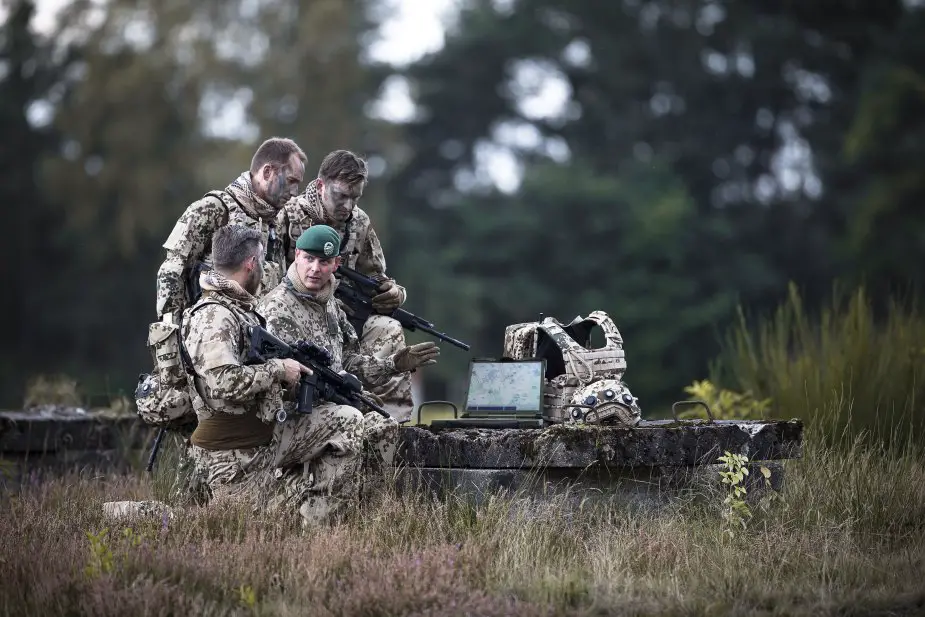Train as you mean to fight! Rheinmetall’s innovative and versatile Legatus live simulation technology doesn’t just enable realistic training of entire units and formations using original equipment, even in urban environments. It also makes highly detailed control and evaluation of exercises possible, an indispensable prerequisite for tactical leaders eager to discover and address possible weak points. At Eurosatory 2018 Rheinmetall is showcasing its Legatus Live Simulation technology especially dedicated for urban operations (UO) training.

Briefing in the field with Bundeswehr soldierds using Rheinmetall's Legatus live simulation technology (Picture source: Rheinmetall)
From the technical standpoint, simulation-supported training for operations in built-up areas is particularly demanding, since determining the position of exercise participants in narrow alleyways or inside buildings in order to depict them on a digital situation map cannot be done with a GPS-based system. The simulation of weapon effects on buildings and the personnel inside them cannot be achieved exclusively with simulated laser fire, but instead requires additional instrumentation inside the physical infrastructure. Near-real time transmission and evaluation poses an additional challenge given the tremendous volume of data following into the exercise control cell.
At present, three important orders underscore the leading role played by Rheinmetall’s Legatus Live simulation technology in sophisticated training and simulation systems for the world’s armed forces.
On behalf of the German Bundeswehr, Rheinmetall has embarked on a step-by-step modernization of the German Army Combat Training Centre, or GÜZ, which it also equipped and now operates. Here, variously composed units and formations can prepare for every conceivable type of mission in a highly realistic environment. This will include training for military operations in urban terrain as well as inclusion of Rheinmetall’s Future Soldier (IdZ) system and its expanded version, the Gladius/IdZ-ES. Through to 2020, Rheinmetall will expand the system technology in a series of phased projects. Among other things, this will involve special expansion of the software for directing and evaluating training sequences in the new “Schnöggersburg” urban warfare facility at the GÜZ, coupled with modernization of the training area’s data communication system.
A military customer from the MENA region (Middle Reast and North Africa) as well as another international customer have also contracted with Rheinmetall to create training facilities for conducting simulation based live “combat exercises in an urban environment”. In the MENA country, a complete training city – the largest in the region - has been developed whose technical infrastructure make it the world’s most advanced training facility for preparing security forces for operations in an urban environment. The other international customer ordered Legatus Live Training instrumentation for a special purpose training village including high-precision indoor- and outdoor precision player position tracking systems as well as Legatus Small Arms Laser Engagement Systems for several different types of weapon and vehicle systems.
Legatus underscores the Rheinmetall approach to developing forward-looking live simulation technology: tough, independent, smart. Tough – because the technology stands up to the harshest environments. Independent – because there’s no need for fixed infrastructure with these wireless, mobile solutions. Smart – because it uses intelligent solutions for effective, highly realistic training with state-of-the-art technology. It even enables technically challenging training solutions for urban operations. Not a single live round is fired during these exercises – all weapons are fitted with laser transmitter units, while sensors in potential targets indicate hits in a way that’s visible both to the soldiers and their trainers. Networking of all exercise participants facilitates after action reviews and evaluation, assuring maximum learning impact and potential for improvement though in-depth analysis of individual exercise sequences.














